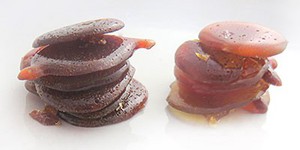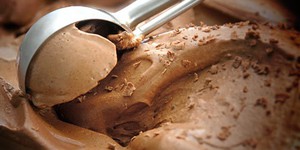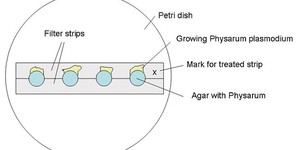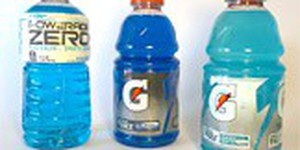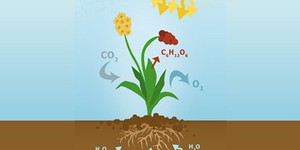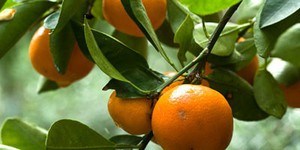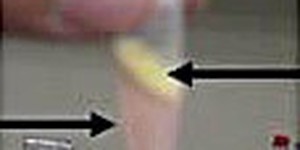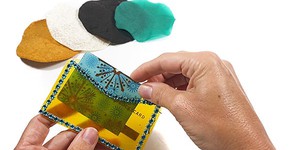Others Like “Explore the Types of Sugar In Foods With Enzymes” (top 20 results)
|
Maple syrup is deliciously gooey and great on breakfast foods like pancakes and waffles. But it has another amazing property. It can be turned into maple candies with a range of textures, like sticky maple taffy or molded maple sugar candy. In this science fair project, you will investigate how the temperature that maple syrup is heated up to affects what type of maple syrup-based candies can be made.
Read more
Have you ever made your own ice cream? If you have, you probably know that you need to get the ice cream mixture really cold to freeze it quickly. Ice cubes alone will not do the job, but if you add chemicals, such as salt or sugar, to the ice cubes that surround the ice cream container, the mixture gets cold enough to freeze. Why does that work? How does adding salt or sugar affect the freezing point of water? Find out with this ice-cold science project and use your results to make your own…
Read more
In this biology science fair project, you will observe how the Physarum polycephalum (P. polycephalum) organism responds to various amounts of glucose. P. polycephalum is easy to grow in a petri dish and responds in complex ways to its environment. Will it grow toward the chemical as it looks for a meal, or will it flee, trying to avoid further contact? Try this science fair project to learn more about chemotaxis in the fascinating Physarum polycephalum.
Read more
Do you read the list of ingredients in foods and drinks before you buy them at the grocery store? If you do, you may have noticed that many of the items, especially colored drinks, contain dyes with names such as FD&C Blue 1, Red 40, or Yellow 5. But how much dye is needed to create all these colors? In this chemistry science project, you will build a simple spectrophotometer that is able to measure the concentration of colored chemicals in solutions. You will test your device by measuring…
Read more
Have you ever seen a (non-carnivorous) plant eat? Probably not! Plants do not get the energy they need from food, but from the sunlight! In a process called photosynthesis, plants convert light energy, water, and carbon dioxide into oxygen and sugar. They can then use the sugar as an energy source to fuel their growth. Scientists have found an easy way to measure the rate of photosynthesis in plants. The procedure is called the floating leaf disk assay. In this plant biology project, you can…
Read more
Are oranges highest in vitamin C when they are fresh from the tree (or, in a pinch, the grocery shelf)? Does the amount of vitamin C in an orange change over time, after it has been picked? In this science project, you will find answers to these questions by measuring the amount of vitamin C in a solution using an iodine titration method.
Read more
You're probably familiar with sauerkraut, a German dish of cabbage that is fermented in a brine made of its own juice and salt. Have you heard of another cabbage dish, called kimchi? Kimchi is a traditional fermented cabbage dish from Korea. Koreans eat kimchi year round, enjoying its spicy taste and the fact that it contains loads of vitamins B and C. In this cooking and food science fair project, you will make kimchi from scratch and investigate changes in pH and glucose as the kimchi…
Read more
Many people you know probably have an opinion about the kind of milk they like to drink—some like it thin and refreshing, others like it thick and rich. Milk can be bought with different fat concentrations, but other than that, it's all the same. Or is it? This science fair project raises a few interesting questions about the other contents in milk. Do all milk products have the same protein concentrations? Do cows produce different types of milk during different stages of lactation?…
Read more
You know there is sugar in non-diet soda, but just how much sugar? Sure, you can look on the ingredients label, but how do food scientists actually measure the amount of sugar in a solution? They use a simple scientific device called a hydrometer. The hydrometer floats in the solution that is being tested, and the higher it floats, the more sugar there is! In this science fair project, you will use a precision hydrometer to measure the amount of sugar in soda.
Read more
Can you imagine clothing, handbags, or shoes made from seaweed or spider silk? To become more sustainable, the textile industry is looking for ways to develop more eco-friendly fabrics. Biofabrics derived from living organisms such as seaweed or bacteria have been proposed as a potential alternative to conventional fibers. In this science project, you will make several biofabrics from alginate (seaweed) and conduct tests to find out which one is most suitable as a textile replacement.
Read more
|
Explore Our Science Videos
Build a Mini Rain Garden
Volleyball Machine: 2019 Engineering Challenge
Can you solve this air pressure puzzle?

